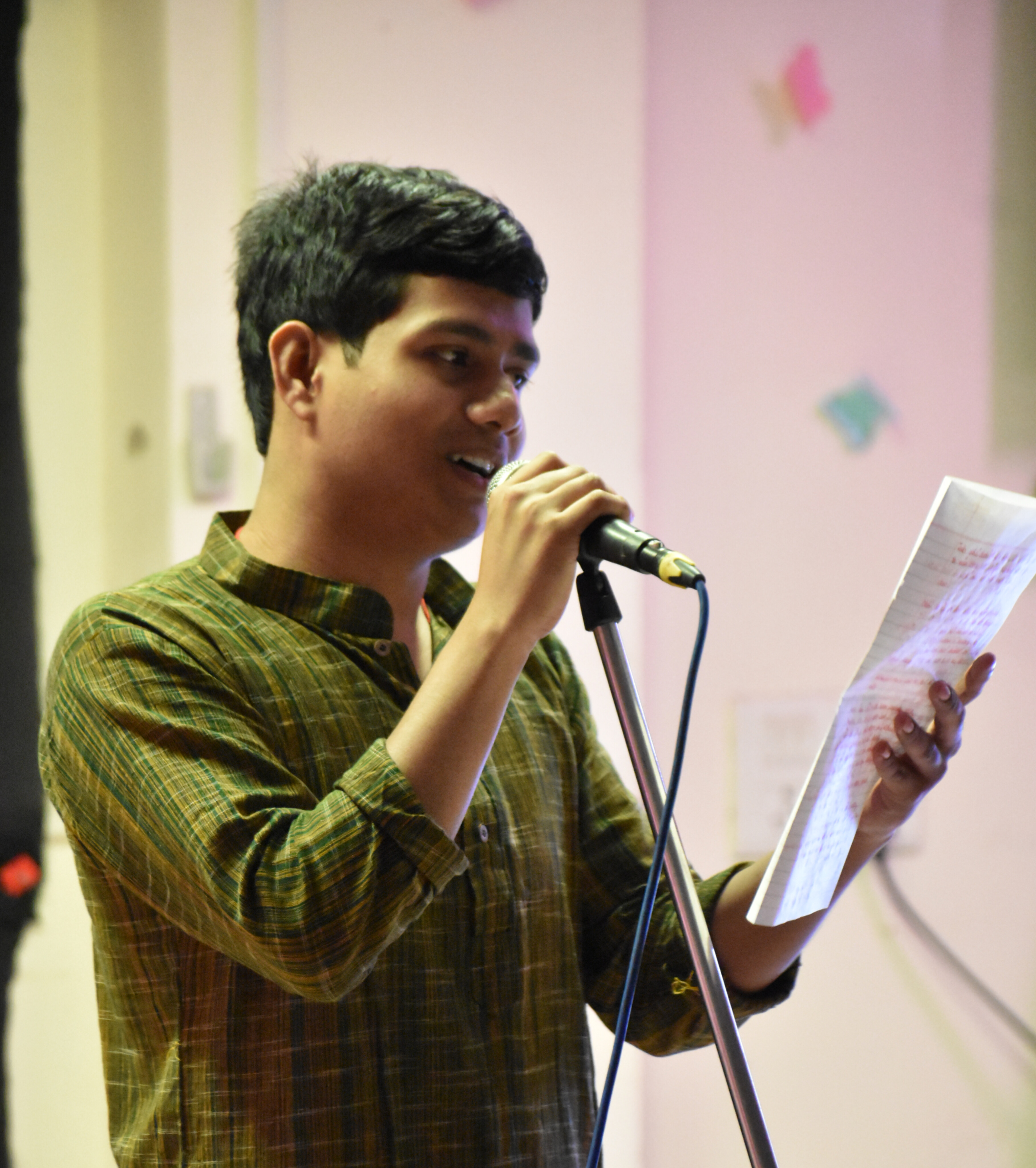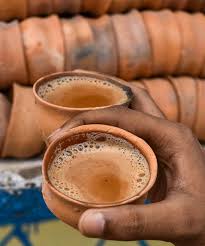
Matir Bhaar
INTRODUCTION
In a literal sense, the term Matir Bhaar refers to ‘tea served in an earthen pot’ or a type of cup made up of clay. The usage of mud cups is prevalent across the Indian subcontinent, especially in Bengal, where the term ‘Bhaar’ is used to refer to these mud cups. In northern India, ‘khullar’ is used to call these mud cups. The most generalized feature of these cups is that they are mostly undecorated, underdesigned, and known for one-time usage and are usually discarded after a single use.
The essence of these cups is not merely to serve tea, but they show the cultural intersection of various communities and how it becomes their identity of survival and livelihood. Every sip of tea served here develops a distinct essence that combines the fragrance of mud or clay with the tea, illustrating India’s connection from north to south and east to west. This distinctive earthly aroma is one of the main ingredients that made the earthen pot tea popular among Indians in general and Bengalis in particular, as my focus is more on the Bengal region.
This collective experience is popular in Bengali culture, from elites to subalterns, who start their day with Matir Bhaar Chaa. One of the popular sayings among Bengalis about Matir Bhaar Chaa is that ‘even in summer, Matir Bhaar tea is a must to start a lazy dday.’ In Bengali consciousness, ‘adda’ means informal conversations among the Bengalis, which is incomplete without this mud cup tea. This cup can be referred to as a cultural catalyst, which strengthens community bonds with social interaction and shapes the rhythm of daily life.
HISTORICAL ROOTS

The style of serving beverages, particularly tea in terracotta cups, which are often called kulhads or Bhar in Bengal, has been a topic of knowledge embedded in the cultural history of the Indian subcontinent. The origin of these earthen cups can be traced back 5,000 years, which connects us with one of the foremost civilizations in India, the Indus Valley civilization, which flourished between 3300 and 1300 BCE. In this phase, mainly in the mature Harappan phase, these kinds of terracotta crafts became prevalent and flourished, and it is even said that the craftsmen were encouraged and carried a kind of mastery in this form of art.
It shows us the development and mastery of ceramic production. This usage of Bhaar is not a modern one, but it is deeply rooted in the material culture of South Asian history, with particular reference to Bengal. As time passed, these ceramic pots underwent a vital change from ancient to early medieval, then from medieval to modern, and modern till today, contemporary India. This enduring legacy of Bhaar usage in Bengal not only shows the cultural tapestry but also shows us how the available resources were being used in the past just to survive and live.
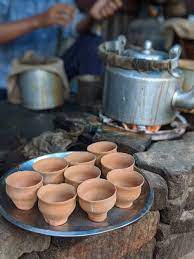
THE AGE-OLD ART OF BENGALI POTTERS & THEIR CRAFTSMANSHIP
Bengal in particular, this age-old tradition of creating mud cups burst around the metropolis of Calcutta, which shows an intertwining of regional art as well as architectural heritage. Over the past decades, the usage of clay in making cups, pots, and terracotta figures was important, but this clay usage can be seen in temple architecture too. It shows how, in Bengal, the clay material flourished and was one of the key resources in various activities. This creation of small, delicate, and even smooth is a labor-intensive process that seeks continuous attention, patience, and hard work, and it is entirely handmade.
One of the foremost processes is to dig up clay from alluvial soil. Then this soil is mixed with red soil so that it can act as a binding agent. The clay is obtained from the basin of the Ganga River, which is often called ‘Gangamati’ in local tradition. Each cup is sculpted through a round block, which moves in a circular motion that provides shape to this cup. Then these cups are sun-dried and, finally, baked on an open fire. This whole process involves family labor, as seen in many cases, and this art is a generational art that is carried forward by both men and women of the family. They are referred to as the Kumbhakhar or Kumhar caste. These Kumhars directly supply these materials to the tea vendors, and in the Bengal region, the Purulia district and Illambazr of Birbhum district are some of the main centers of the Bhaar-making family labor industry.
CULTURAL TAPESTRY OF TRADITIONAL MATIR BHAAR
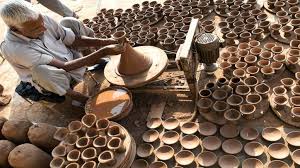
This Matir Bhaar is not only for a showpiece purpose, but it holds a central position to feel the aroma of the first sip of tea, which is affectionately known as ‘Calcutta moments.’ The vital significance of this experience transcends not only the consumption of beverages but is deeply intertwined with the study of the surrounding environment, aesthetics, and social interactions. The gathering on the roadside tea stall and spontaneous mumbling of people from various social groups, where topics such as daily ritual, politics, social causes, and many more are covered.
It could be correctly stated that without tea, the concept of ‘adda’ is vague; both need each other at any point at the moment. The piping hot tea in Adda holds a special significance, which holds an integral characterization after long hours of daily work and rituals. This integral connection of both tea and Adda shows us the importance of communal engagement and cultural continuity. From station to tea journeys, the usage of Matir Bhaar in circulating tea holds a special importance that creates a sense of ‘Probashe Bengali’ or the idea of Bengalis, which evokes a strong sense of nostalgia, cherished childhood memories, and happy moments.
This holds a collective cultural memory among the Bengalis, which endows them with a profound sense of cultural identity. Even this Matir Bhaar is used to make one feel the ‘rich and earthly flavor of the tea.’ One of the most important environmentalists, Diti Mukherjee, argues that plastic comes from factories, but this Bhaar comes from the people, the land from which they belong.” This shows how the connection between the environment and the mode of production is intertwined. The traditional Matir Bhaar doesn’t include any kind of motifs; it’s so simplistic that it tells us the divine essence of earth and tells the story of subalterns, which is yet simplistic and profound in nature.

MODERN FOOTPRINTS OF THIS MATIR BHAAR
The pottery-making culture of Bengal holds a deep-rooted cultural and social history and now faces a crisis of significant economic challenges. As we all know, the demand and supply of pottery making in India depend upon various occasions rather than daily usage, so if we understand the making of Matir Bhaar in context with occasional seasons such as fairs, festivals, and many more.
The supply of these Matir Bhaar can be seen at a peak rate during these occasional seasons rather than the demand of daily usage. This seasonal demand pattern makes it very difficult for the artisans to lead a contented life, as this occasional season brings an inconsistent income supply. As industrialization and urbanization took hold in many regions, the supply of raw materials such as clay became scarce due to the disposal of garbage in water bodies and ponds and dumping it on the ground. This is affecting the efficiency and production of Matir Bhaar in particular and pottery culture in general.
It is not only affecting the circulation of raw materials but also heavily affecting the profit margins of the artisans. In modern India, plastic has become a huge replacement for these clay materials, and plastic products are mass-produced. As a result, the Matir Bhaar is gradually being replaced by plastic or paper cups, which is impacting the livelihood of artisans. For instance, the Bhaar might cost 140 paise on one hand, and on the other, the paper or the plastic cup can cost 7 to 10 paise. This price difference will unapologetically attract the vendors to buy. This can often cost the livelihood of the artisans.
CONCLUSION
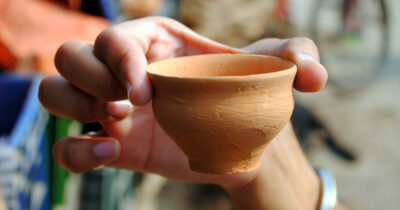
The history and the legacy of Matir Bhaar in Bengal hold a profound impact on the reconstruction of the social and cultural history of India. This evolving artisanal tradition and artistic creativity, and the evolving socio-environmental dynamics, have paved or provided an identity to these clay artisans. From its origin to its modern-day aspect, this tradition evolved gradually. However, the current challenges of modernity and urbanization had a heavy impact upon the lives of artisans, but one thing could be noted: this artistic legacy shaped rural Bengal and showed us the way of achieving commercial enterprise through artistic means. This Matir Bhaar preserves the testament of art and culture that speaks to the vibrant nature of social and cultural history.
As it is about the traditional Matir Bhaar of Bengal, it doesn’t include motifs as this article focuses on this Bhaar shown on the above picture which is simplistic and smooth.
WORKS CITED
- https://theborabooktique.wordpress.com/2017/11/22/matir-bharer-cha-calcutta-feels/
- http://pages.kiva.org/node/12234
- https://nibbleogram.wordpress.com/tag/kolkata-history/
- https://shaopeng.blog/wanders/kulhad-chronicles-savouring-indias-diverse-flavours-in-terracotta-
- https://food.ndtv.com/food-drinks/kulhad-the-traditional-clay-cups-from-ancient-india-and-its-benefits-1754901
- https://www.aljazeera.com/gallery/2016/10/26/kolkatas-age-old-tradition-of-bhar-clay-cups-of-tea
- https://thebengalstore.com/blogs/blog/terracotta-tales-the-stories-behind-bengals-terracotta-clay-crafts
- https://www.jetir.org/papers/JETIR2206330.pdf

